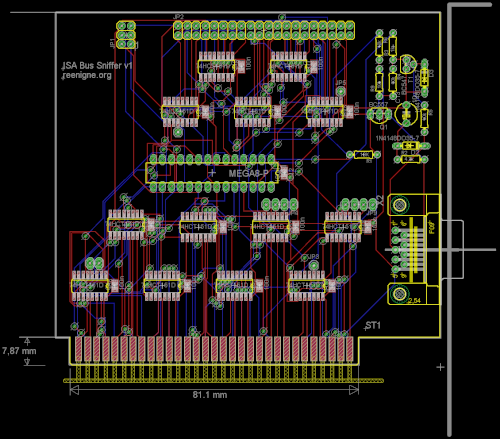I want to write a series of posts about the rich type system I want to implement for ALFE. This post will serve as an index to them.
I recently tried doing a bit of programming in Haskell, and although I didn't produce anything worth showing off, I did get a bit of a feel for the language and how it works. One of my favorite things about Haskell is the rich type system, and I want to use some of its ideas in ALFE. Some of the ALFE types below are inspired by Haskell types.
Given types Foo, Bar and Baz I would like ALFE to have the following types:
- Foo* - a pointer type.
- Foo(Bar) (aka Foo -> Bar) - a function type.
- Foo | Bar - a "sum" type.
- Foo? - a "Maybe" type.
- (Foo, Bar) - a "product" type.
- [Foo] - a "sequence" type.
- Foo[2] - a fixed length array type.
- Bottom - the "bottom" type.
- Variant - the "variant" type.
- Label - the "label" type.
- Complex<Foo> - a complex number type.
- Rational<Foo> - a rational type.
- String - the string type (usually represented in memory as UTF-8 in some form).
- CodePoint - a type capable of holding any Unicode code point.
- Fixed<Foo, Bar> - a fixed point fractional type.
- Boolean - the boolean type.
- Int1, Int2, Int4, Int8, Byte, Int16, Int32, Int64, Int128, Int256, Int512, UInt1, UInt2, UInt4, UInt8, UByte, UInt16, UInt32, UInt64, UInt128, UInt256, UInt512, NInt1, NInt2, NInt4, NInt8, NByte NInt16, NInt32, NInt64, NInt128, NInt256, NInt512 - fixed-width integer types.
- Word, Int, HalfWord, QuarterWord, DoubleWord, QuadWord, UWord, UInt, UHalfWord, UQuarterWord, UDoubleWord, UQuadWord, NWord, NInt, NHalfWord, NQuarterWord, NDoubleWord, NQuadWord, FastInt1, FastInt2, FastInt4, FastInt8, FastByte, FastInt16, FastInt32, FastInt64, FastInt128, FastInt256, FastInt512, FastUInt1, FastUInt2, FastUInt4, FastUInt8, FastUByte, FastUInt16, FastUInt32, FastUInt64, FastUInt128, FastUInt256, FastUInt512, FastNInt1, FastNInt2, FastNInt4, FastNInt8, FastNByte FastNInt16, FastNInt32, FastNInt64, FastNInt128, FastNInt256, FastNInt512 - machine-dependent integer types.
- WordString, Integer, Unsigned - arbitrary-precision integer types.
- Float16, Float32, Float64, Float128 - fixed-length floating-point types.
- Float - machine-dependent floating point types.
- Floating - arbitrary-precision floating point type.
- Concrete (possibly also specializations like Length, Time, Area, MagneticFluxDensity etc.)
There's still a lot about this that isn't finalized. For example, I might use some templates to avoid having all those fixed-width and machine-dependent types.
